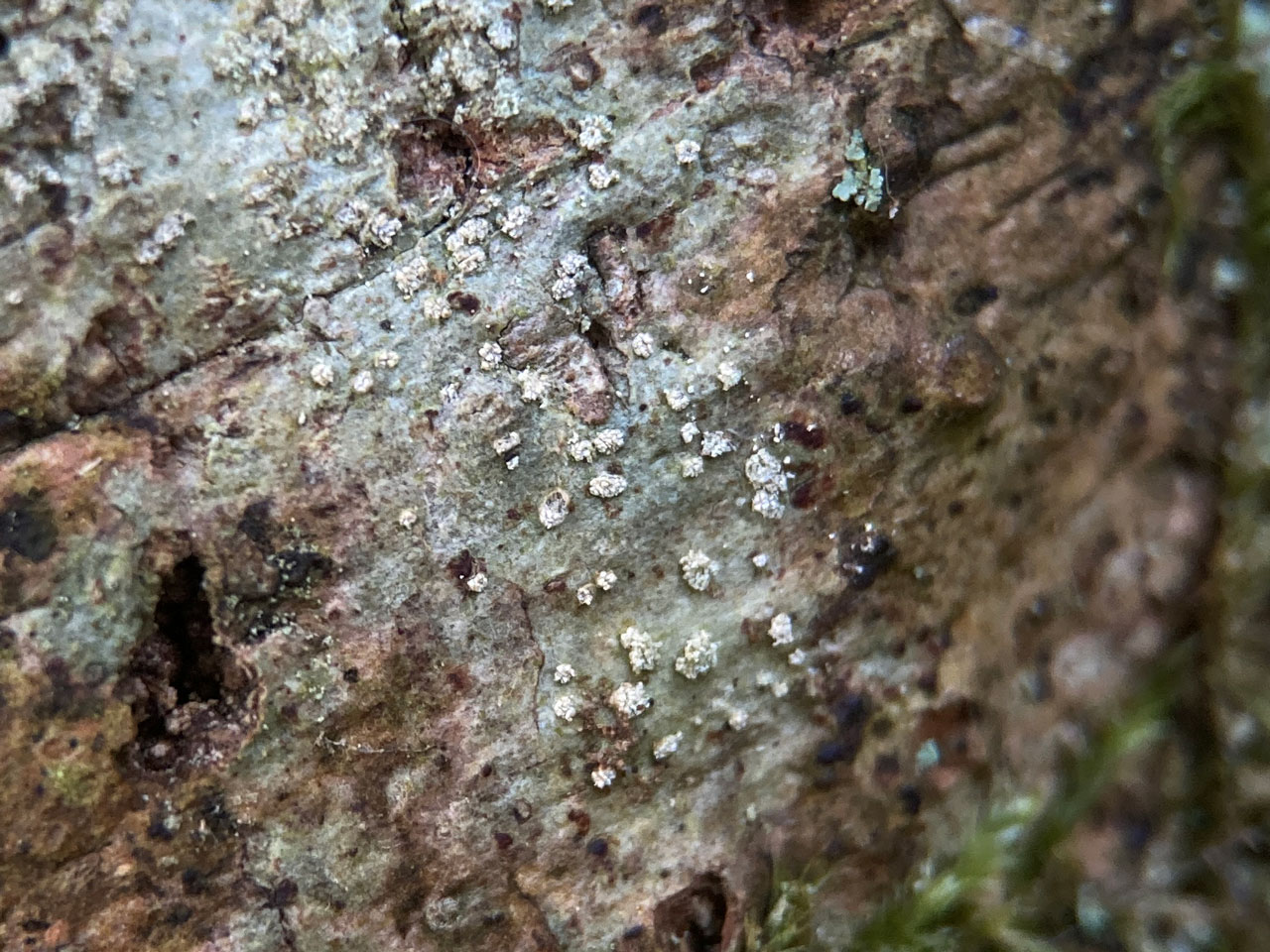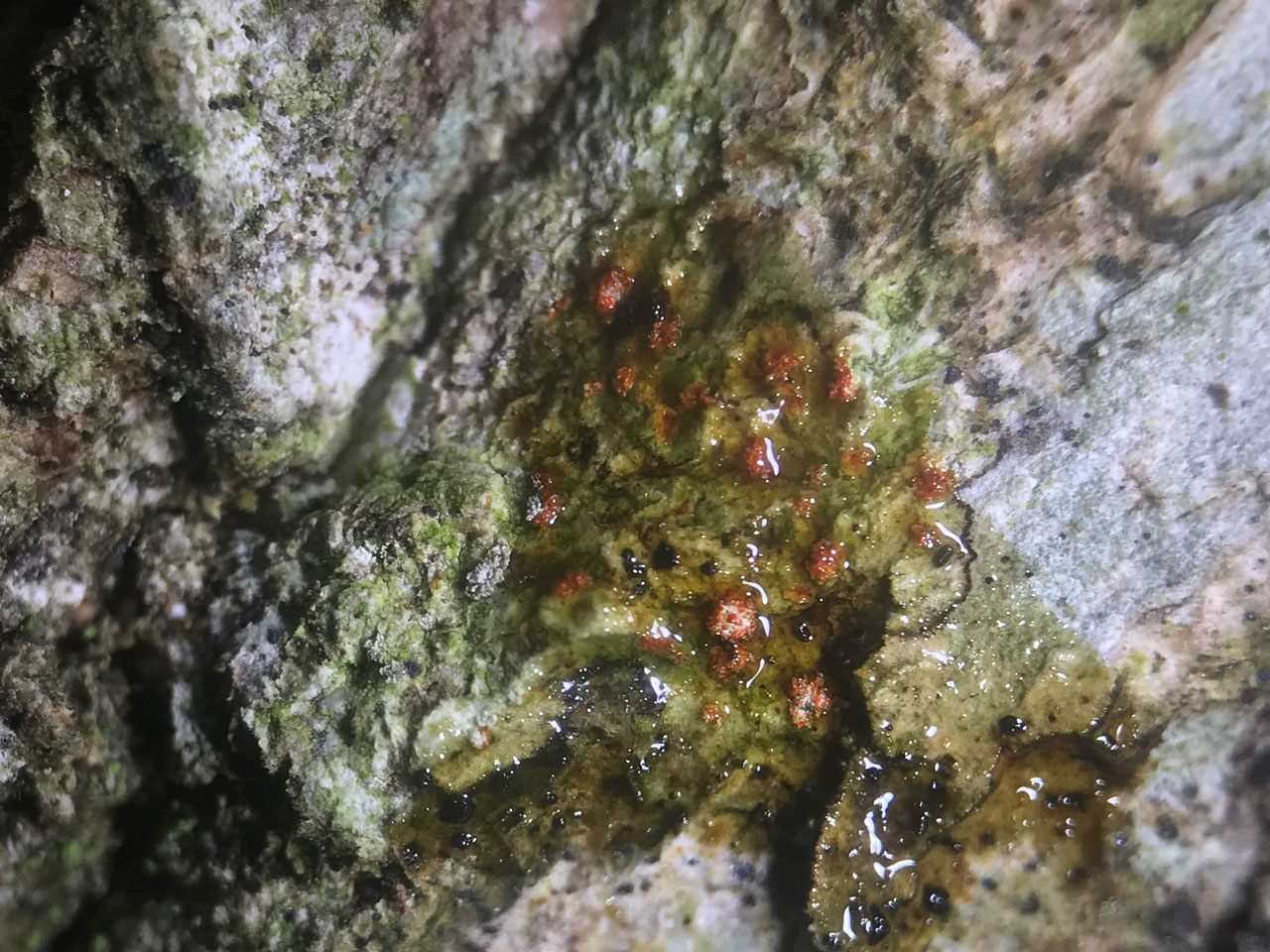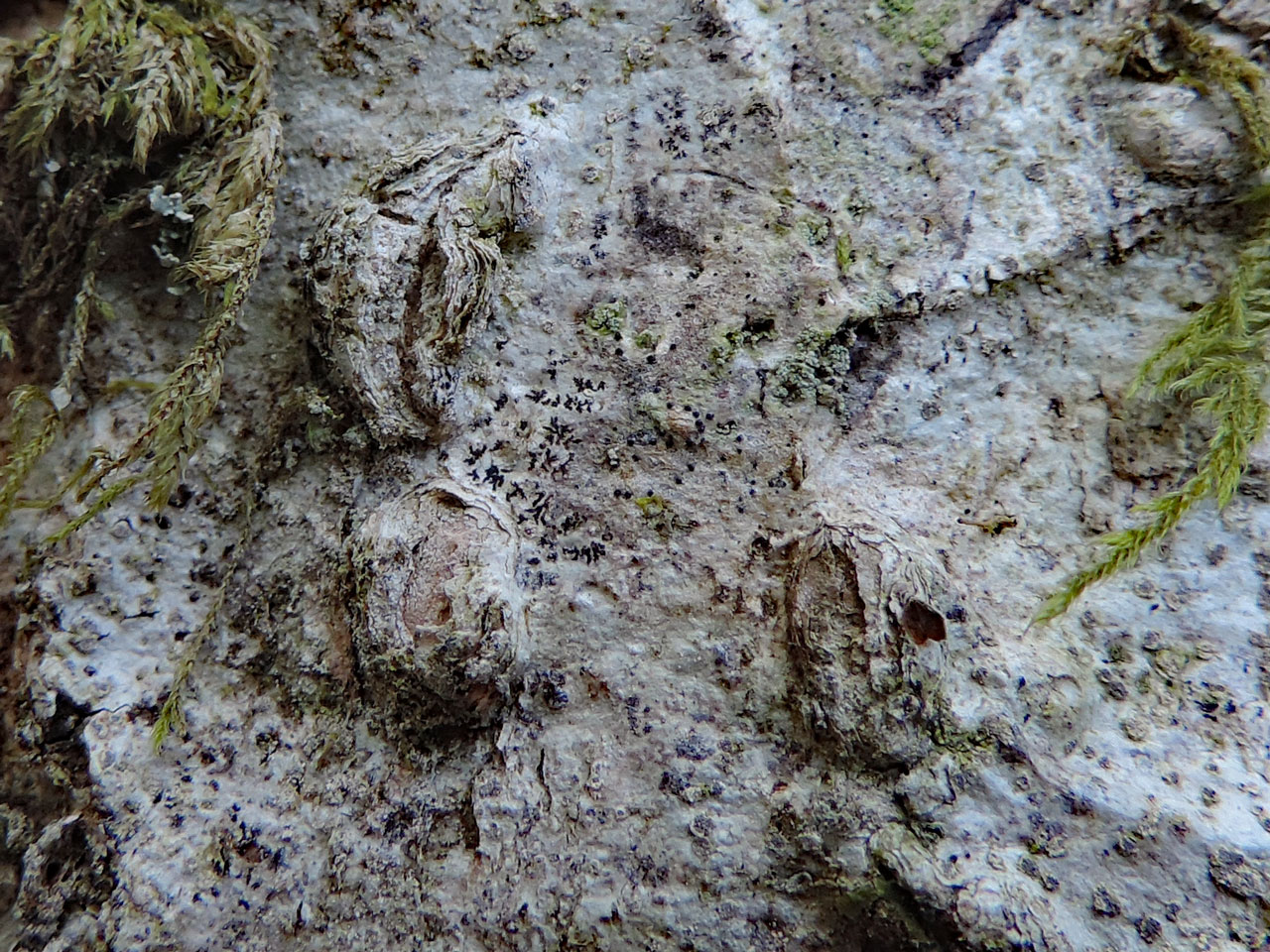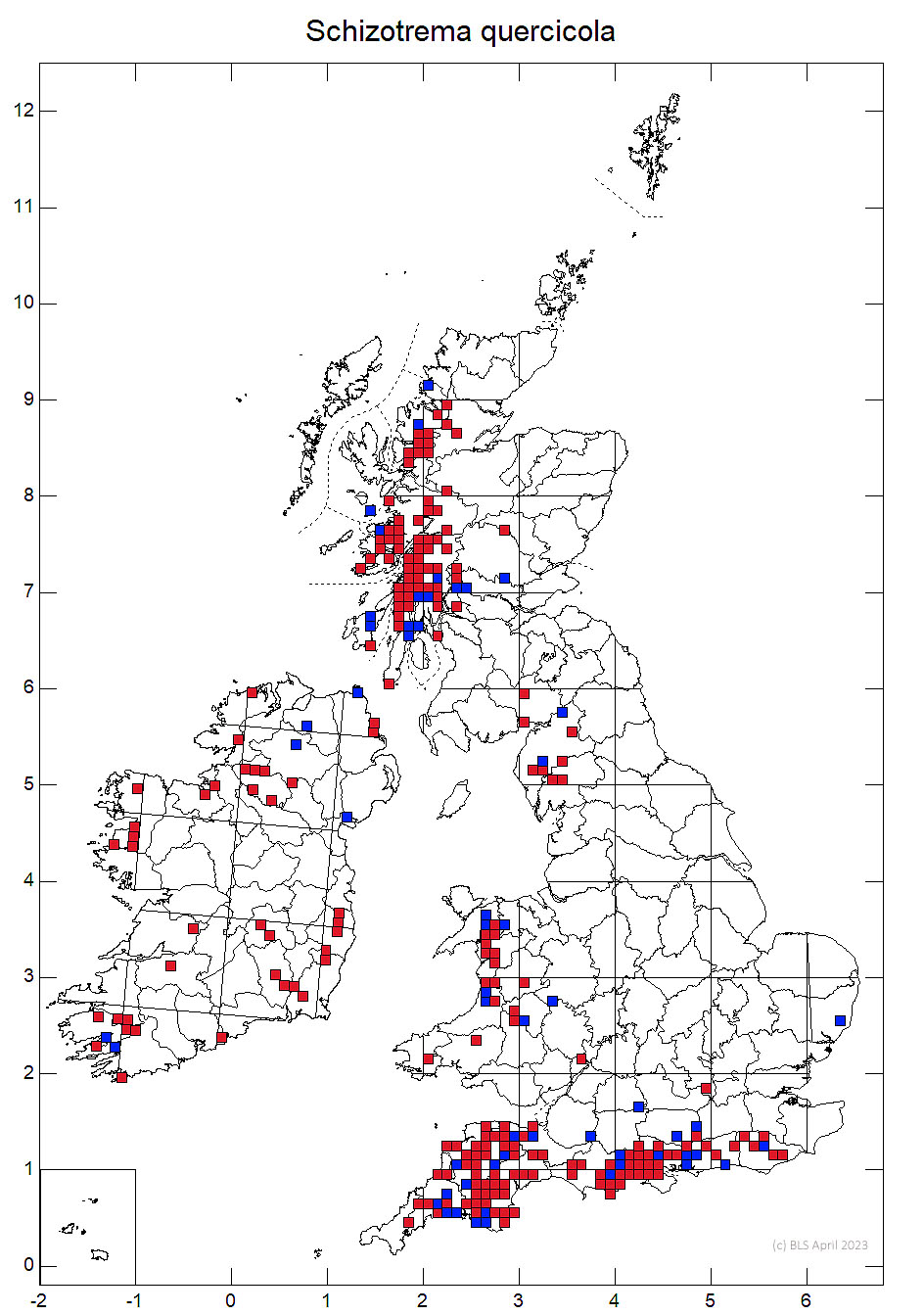Schizotrema quercicola
A crustose sorediate epiphytic lichen with neat punctiforme soralia which give a Pd+ rust-red spot test and have a pinkish tinge from the Trentepohlia photobiont. Found on acid bark in old oceanic woodlands, where in can be confused with the similar looking Pertusaria pupillaris, which is also Pd+ rust-red, but this has chlorococcoid algea as a photobiont so the soralia lack the pink tinge.
Thallus thin, pale brownish grey to greyish white, slightly verrucose, often overgrown with chlorococcoid algae; soralia scattered, punctiform, 0.2–0.5 (–0.7) mm diam.,discrete, not becoming confluent, pink-grey when fresh but becoming whitish in dried collections. Apothecia and pycnidia unknown. Thallus and soredia C–, K–, KC–, Pd+ orange, UV– (fumarprotocetraric acid, ± protocetraric acid and an unidentified substance).
Formerly included in the quite unrelated genus Schismatomma, due to broad similarities in thallus characters, but now known to belong to the primarily tropical and austral genus Schizotrema (Ertz et al. 2019). Very similar mtSSU sequences indicate S. quercicola is closely related or conspecific to the non sorediate and fertile Schizotrema zebrinum (pictures). This is a corticolous species endemic to south-east Australia and New Zealand, where it occurs in temperate and subtropical rainforests. So far S. quercicola has been confirmed only from Britain, Ireland and Norway, a remarkable disjunct distribution, unless S. quercicola has been overlooked in the tropics.
It has a superficial resemblance to Pertusaria pupillaris, which has a chlorococcoid photobiont and does not contain Trentepohlia (i.e. is not orange when scratched and the soralia are not pinkish). The obligately lichenicolous Arthonia invadens occurs on this species.
On acid bark on old tree trunks, particularly of Oak, Beech, Holly and Alder, in sheltered woods, rarely on occasional on damp Oak lignum, often associated with Loxospora chloropolia and Thelotrema lepadinum.

Widespread in ancient woodlands. W. and S. Britain, a few records from E. England (Suffolk), scattered in Ireland.
A widespread oceanic species characteristic of old woodlands, and used in the SOWI, LRI & URI indexes. In the south it can colonise into older young growth stands of 19th century date, as in the New Forest, where it is especially abundant. Here Sanderson (2001), found it on 60 and 68 trees per ha in two old growth stands and 17 – 30 trees per ha in three 19th century Oak plantations. It is much less frequent to the north.
Britain: International Responsibility and Notable species
Scotland: Priority Taxon for Biodiversity in Scotland
Wales: Near Threatened
Aptroot, A., Weerakoon, G., Cannon, P., Coppins, B., Sanderson, N. & Simkin, J. (2023). Ostropales: Graphidaceae, including the genera Allographa, Clandestinotrema, Crutarndina, Diploschistes, Fissurina, Graphis, Leucodecton, Phaeographis, Schizotrema, Thelotrema and Topeliopsis. Revisions of British and Irish Lichens 36: 1-23.
Ertz, D., Sanderson, N., Coppins, B.J., Klepsland, J.T. & Frisch, A. (2019). Opegrapha multipuncta and Schismatomma quercicola (Arthoniomycetes) belong to the Lecanoromycetes. Lichenologist 51: 395-405.
Sanderson, N. A. (2001) Epiphytic Lichen Monitoring in the New Forest 2000. LIFE Job L33A2U. Lyndhurst: Forest Enterprise.
Text by Neil A. Sanderson based on Aptroot et al (2019)




